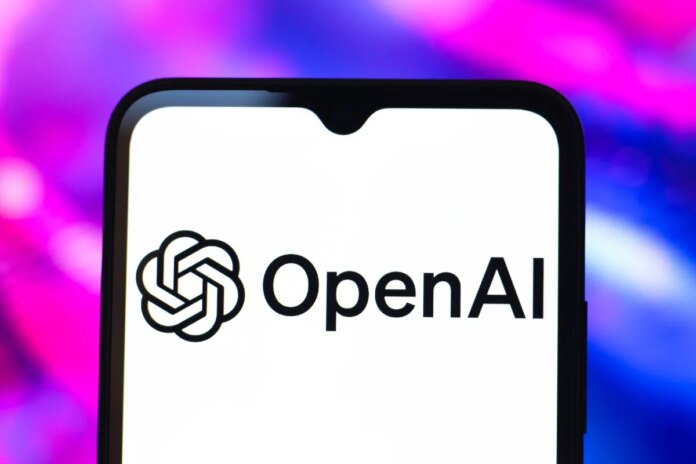The Grand Vision of AI Infrastructure
Imagine a future where artificial intelligence isn’t just a chatbot on your screen, but a pervasive force, fundamentally reshaping industries, powering scientific breakthroughs, and driving our economy forward. Sounds exciting, right? But have you ever stopped to consider the colossal, almost unfathomable infrastructure required to bring such a vision to life? We’re talking about massive data centers, specialized servers, and robust electrical grids – the very digital sinews and muscles that will allow AI to breathe, learn, and operate at scale. This isn’t just about software anymore; it’s about industrial-grade hardware, energy, and raw materials. And the price tag? Well, it’s enough to make even the most seasoned venture capitalist blink.
OpenAI’s Trillion-Dollar Ambition Meets Washington
This monumental challenge forms the backdrop for a fascinating, and at times contradictory, conversation currently unfolding between a leading AI innovator, OpenAI, and the US federal government. OpenAI’s CEO, Sam Altman, recently put a staggering figure on their ambition: a commitment of $1.4 trillion in capital over the next eight years. Let that sink in for a moment. $1.4 trillion. It’s a sum that highlights not only the company’s aggressive growth projections – from an anticipated $20 billion annualized revenue run rate by the end of 2025 to hundreds of billions by 2030 – but also the sheer scale of the physical build-out required to support it.
The Push for Federal Support
So, when you’re looking at commitments on that scale, the question naturally arises: how does one even begin to mobilize such resources? This is where the plot thickens, revealing OpenAI’s strategic outreach to Washington. Through a recent letter penned by their chief global affairs officer, Chris Lehane, to the White House’s director of science and technology policy, Michael Kratsios, OpenAI laid out a clear wish list for federal support. Their core proposal? To expand the Advanced Manufacturing Investment Credit (AMIC) – a significant 35% tax credit initially designed to boost semiconductor fabrication under the Biden administration’s landmark Chips Act – to encompass critical AI infrastructure like electrical grid components, AI servers, and AI data centers themselves.
Extending the Chips Act for AI
Think of it like this: the Chips Act was designed to supercharge domestic chip manufacturing, ensuring America had the foundational silicon to compete globally. OpenAI is essentially arguing that if we’re serious about leading the AI race, we need to extend that same strategic foresight to the “post-chip” infrastructure. Lehane articulated this eloquently, stating that broadening AMIC’s coverage would “lower the effective cost of capital, de-risk early investment, and unlock private capital to help alleviate bottlenecks and accelerate the AI build in the US.” In essence, they’re asking for a catalyst – a mechanism to make the enormous financial leap a bit less daunting for private investors, thereby accelerating the deployment of this vital infrastructure.
Streamlining Permits & Securing Raw Materials
But their requests didn’t stop there. OpenAI also pressed for the government to streamline and accelerate the often cumbersome permitting and environmental review processes for these massive construction projects. Anyone who has ever tried to build something substantial knows that navigating regulatory hurdles can be a labyrinthine nightmare, adding years and immense costs to a project. For a sector moving at the speed of light, such delays are crippling. Furthermore, they called for the creation of a strategic national reserve of essential raw materials – think copper, aluminum, and processed rare earth minerals – that are indispensable for building advanced AI infrastructure. In a world grappling with supply chain vulnerabilities, securing these foundational resources isn’t just a business advantage; it’s a matter of national strategic importance.
Clarifying Government Financial Support
Now, here’s where the narrative gets a bit more complex, revealing some internal tension and crucial clarifications. While OpenAI’s formal letter sought tax credits and streamlined processes, comments from executives at public events sparked a different kind of debate. During a Wall Street Journal event, OpenAI CFO Sarah Friar initially suggested the government should “backstop” OpenAI’s infrastructure loans. The term “backstop” immediately conjured images of government guarantees or bailouts – a very different beast from tax credits. However, Friar quickly clarified her remarks on LinkedIn, stating unequivocally, “OpenAI is not seeking a government backstop for our infrastructure commitments. I used the word ‘backstop’ and it muddied the point.” This was a swift and necessary correction, highlighting the sensitivity around the perception of corporate reliance on public funds.
The CEO’s Philosophical Stance
Adding further weight to this clarification, CEO Sam Altman himself weighed in, articulating a clear philosophical stance: “We believe that governments should not pick winners or losers, and that taxpayers should not bail out companies that make bad business decisions or otherwise lose in the market.” This is a powerful statement, emphasizing free-market principles and individual corporate accountability. It creates a stark contrast: on one hand, a plea for strategic economic incentives like tax credits to de-risk investment; on the other, a firm rejection of direct government financial guarantees that might insulate companies from market realities. Altman did, however, concede that loan guarantees had been discussed “as part of supporting the buildout of semiconductor fabs in the US,” subtly acknowledging the precedent for government support in foundational technology sectors, even while distinguishing OpenAI’s specific needs.
Navigating the Nuance of Support
So, what are we to make of all this? Is OpenAI asking for a handout or a hand-up? The nuance is critical. They are clearly not asking for taxpayers to absorb the risk of their business decisions, as Altman’s statements attest. Instead, they are advocating for the federal government to act as a strategic enabler, creating a more favorable economic environment and removing logistical barriers for investments that are, undeniably, in the national interest. Expanding tax credits like the AMIC for AI infrastructure isn’t about guaranteeing profits; it’s about leveling the playing field and accelerating investment in an area deemed vital for future competitiveness. Streamlining permitting isn’t about cutting corners; it’s about efficient execution. Securing raw materials isn’t about corporate welfare; it’s about national resilience.
A Pivotal Moment in AI and Public Policy
Ultimately, this unfolding dialogue between OpenAI and the US government illuminates a pivotal moment. It’s a moment when the private sector’s ambitious vision for AI collides with the public sector’s role in fostering innovation, national security, and economic growth. The question isn’t whether AI is coming; it’s already here. The real question is how we, as a nation, strategically position ourselves to lead this revolution, ensuring the underlying infrastructure is robust, resilient, and ready to meet the demands of an AI-powered future. The proposals from OpenAI offer a concrete, action-oriented blueprint for discussion, prompting us to consider what kind of strategic investments are truly necessary to win the AI race and build the digital highways of tomorrow.
#AIInfrastructure #OpenAI #TechPolicy #DigitalFuture #InnovationNation
“Don’t just read the article—join the conversation. For daily insights, exclusive content, and a community of innovators, your next click is essential. Your inspiration awaits.”














